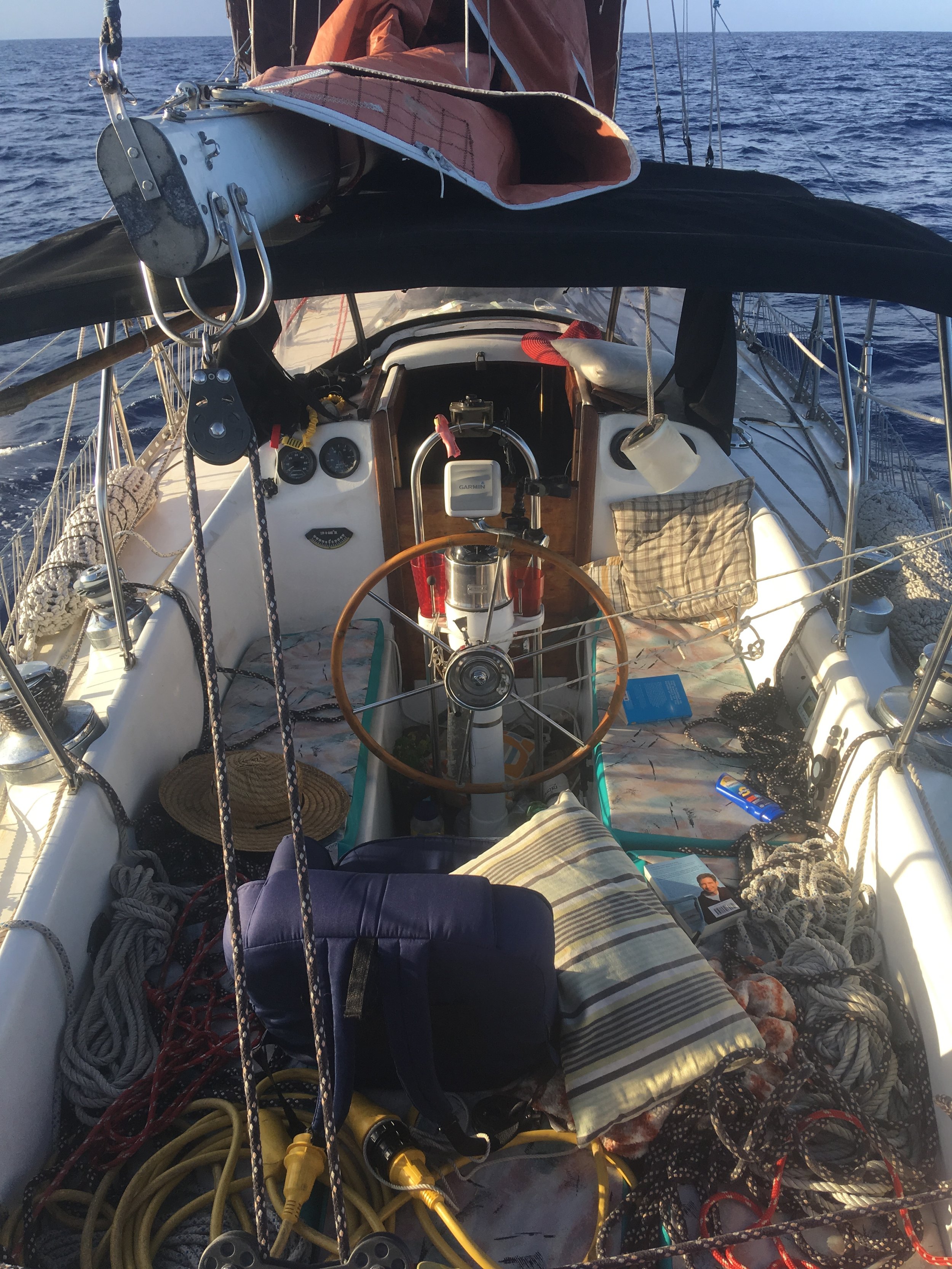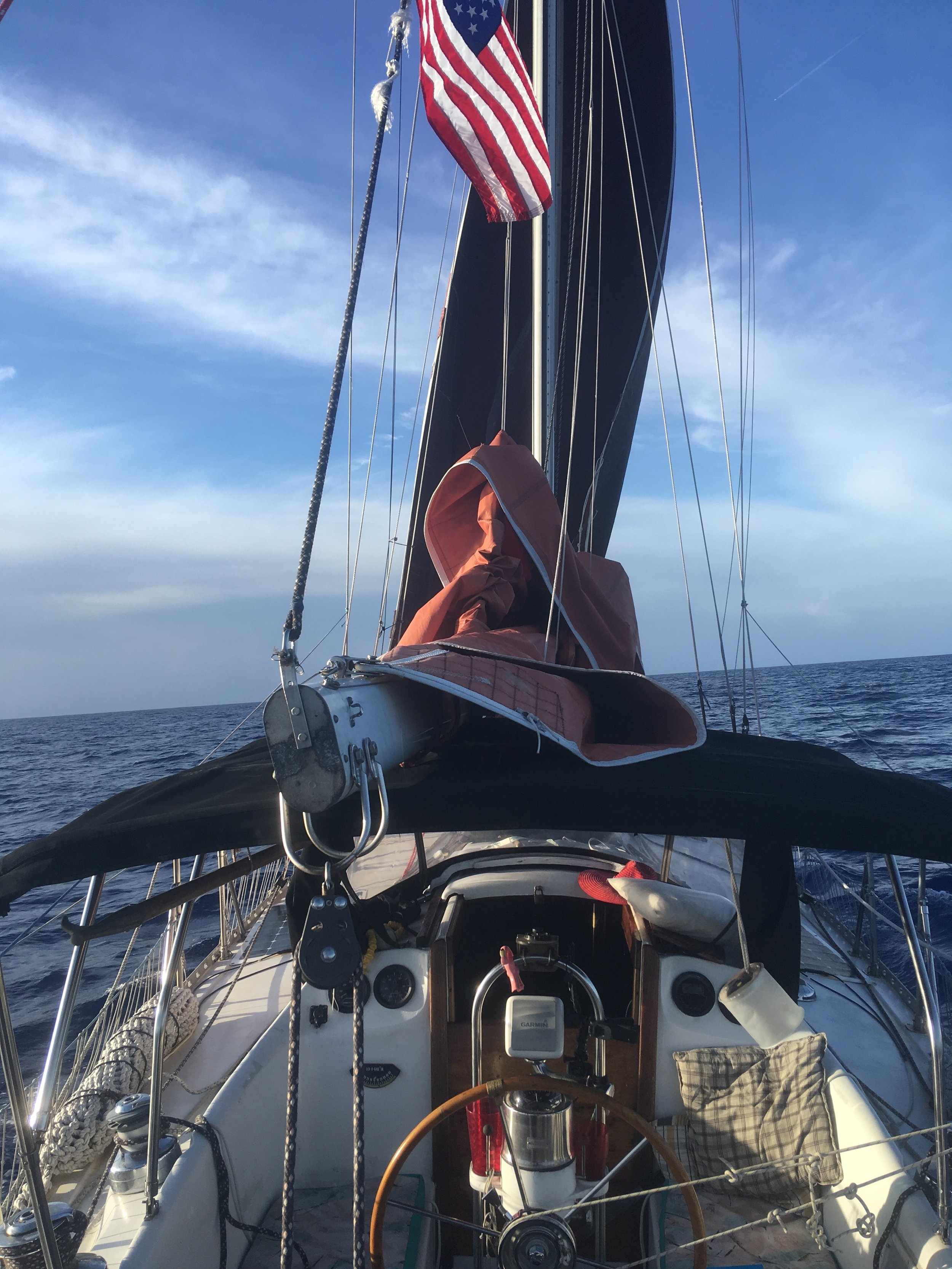In the Westerlies, lack of wind is not as big of a problem as too much wind. We are in search of the right amount of wind as we make our way towards Bermuda.
The winds are light with the occasional squall and we are trying to find our way as quickly and safely as possible.
The angry ego of our crew member has been broken by the spirit of the sea. He has learned that there is no way to order your commands at the natural world which we are guests in. Having accepted that defeat may be a thing he will have to admit, he decides to make a deal. If we can get near Bermuda by July 3rd, he will stay on the boat and continue his dream voyage of crossing the Atlantic with us as we venture across the ocean for more simplistic reasons (we want to sail to the Azores).
The date is July 1st, and he has given us 3 days to make it to Bermuda. If he were nicer to us, we would have raced that last bit of distance to encourage him to stay on board with us, but since he was very mean to us, we decided to take our time and enjoy the slow sail to Bermuda.
Getting there after the 3rd would avoid a confrontation since he would leave because he decided to leave and not because we ordered him off the boat!



















